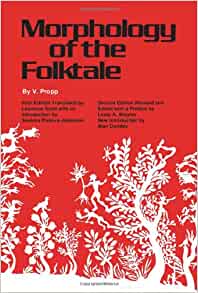Copyright 2021 by Michael Williams
Since 1976, Stephen King has been killing trees left and right. In both its paperback and hardcover incarnations, King's Desperation (1996) is 704 pages long; 'Salem's Lot (1975) is 672 pages (paperback) or 464 pages (hardcover); the length of his IT (1986) isn't measured by page count, but by the pound (2.1, paperback; 3.49, hardcover).
How does an author write such massive tomes, one after another, seemingly tirelessly, for 45 years? That was my original question, which mutated into, How does an author even begin such a massive volume? From there, my query branched, as thoughts—at least, my own—often do, becoming, What are some of the conventional ways by which authors start books?
Taking the Aristotelian approach, which is descriptive, rather than prescriptive, meaning that the philosopher didn't tell how something was to be done, offering rules and dictating procedures, but, instead actually attended plays and described what he saw playwrights actually do, I compiled a short list of techniques that writers of various genres have used successfully in beginning their own books in effective and engrossing ways. I am pleased to share my observations with you.
Convene a group. In the award-winning A Fine Art Mystery Series, Paula Darnell's protagonist Amanda Trent is a member of an artists' guild; in the 1998 movie Armageddon, Harry S. Stamper gathers a team (Chick, Rockhound, Max, Oscar, Bear, and Noonan) to help him stop an asteroid on a collision course with Earth; in the TV series Murder, She Wrote (1984-1996), Jessica Fletcher, who writes murder mysteries for a living and solves them as a sideline, lives in Cabot Cove, an idyllic coastal town in New England; in Gary Pullman's dark urban fantasy, A Whole World Full of Hurt (2016), the leader of a witches' coven gathers sacrificial victims, whose life-essences provide the spiritual energy she needs to conquer rival covens. The tactic of convening a group is frequently used in the 2014 TV police procedural series The Brokenwood Mysteries as well. The sereis is set in the New Zealand town of Brokenwood and involves murders among such groups as a traveling theatrical troupe (“To Die or Not to Die”), bicycle racers (“Tontine”), ghost train passengers (“Scared to Death”), steampunk festival participants (“The Power of Steam”), a hunting party (“Hunting the Stag”), Lord of the Rings tourists (“The Black Widower”), and a local historical village's staff (“Stone Cold Dead”).
Show a series of bizarre events. Many novels and movies start by showing a series of bizarre events, which, because the explanation of them is withheld, appear mysterious, enhancing readers' or moviegoers' interest in them. The Taking (2010), by Dean Koontz, employs this technique, as do many of his other novels. An eerie scent lingers in the air. A strange rain falls; thick fog drifts through an isolated small town. Mysterious lights float among trees. Reports of bizarre weather are broadcast. As the residents of the community band together, they come under attack, but they don't know who—or what—their predators are. Pullman's urban fantasy also begins with a series of strange incidents: a college student is attacked when he collects for a subscriber on his little brother's paper route; a bride is assaulted from within, during her wedding; a cemetery caretaker meets his end as he rests from his labors; gargoyles atop the Washington National Cathedral eerily come to life; a young woman vanishes while taking a bath. What is behind these bizarre incidents? Audiences will continue to watch as the film progresses; readers' curiosity will keep them turning the pages.Begin in media res. Writers also frequently start a story in media res, or in “the middle of things.” The audience or readers have no idea what led up to the current events in which the character (often the protagonist) finds him- or herself, which is one reason for their absorption in the story's initial action. In the process, the writer might involve the character in a problem; then, the audience or the readers have another reason to continue to watch or read; the suspense—and the moviegoers' or readers' curiosity—is doubled: they are curious about how the character got into his or her present situation and about how or whether he or she will get out of it, and the audience or readers are also curious as to whether the character's related problem will be solved and, if so, how or, if not, why not. Falling Down (1993) starts with the protagonist, William Foster, stuck in traffic; he is shown as frustrated, easily angered, at the breaking point. He solves his immediate problem by abandoning his car on the jammed freeway, but the greater question of whether he will solve his ability to cope in a society that he believes is “falling down” around him remains unresolved, so the suspense continues. By combining an in media res beginning with an enduring problem for the protagonist, storytellers hook their readers twice.
These are only a few of the many ways, of course, that novelists and screenwriters create and maintain suspense while establishing their stories' settings, characters, conflict, and tone. Maybe, in future posts, we can look at some of the techniques writers use to encourage audiences and readers to continue the story through its middle and how writers conclude their tales in an emotionally satisfying manner.
Note: Michael Williams is the author of the Twisted Tales series, which presently consists of three volume of suspenseful flash fiction, mostly in the fantasy genre, Tales with a Twist, Tales with a Twist II, and Tales with a Twist III.









































